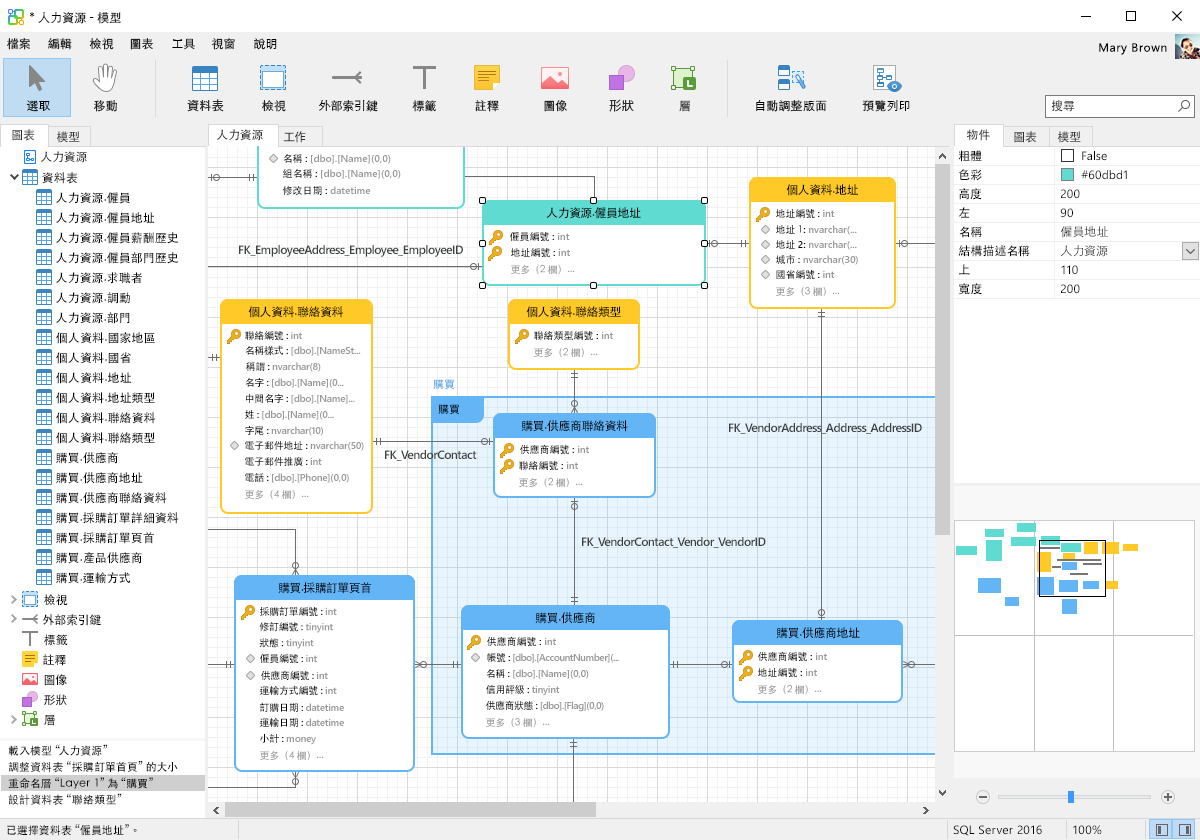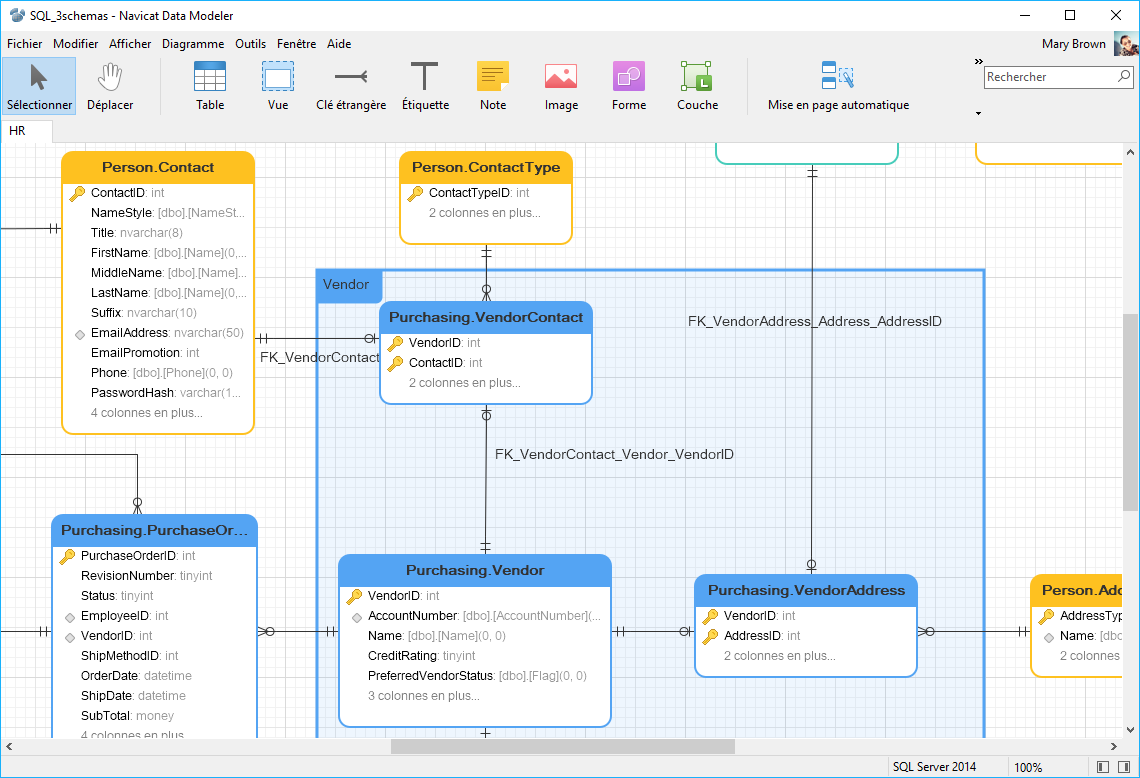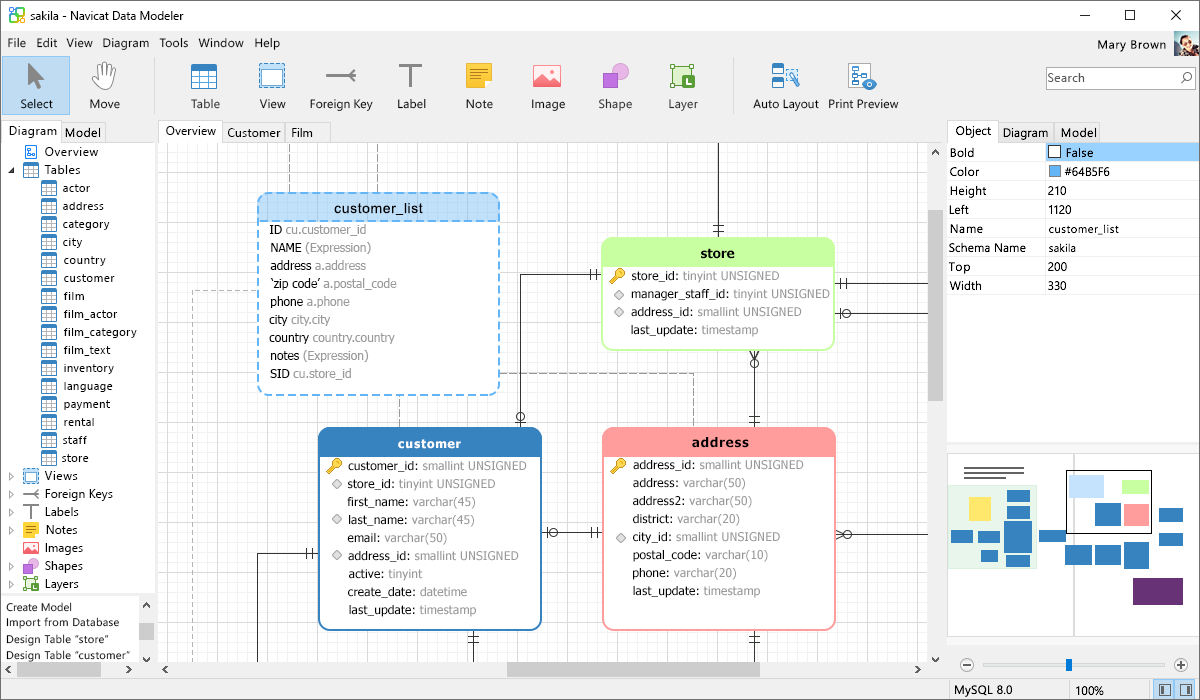

“Using Lucidcharts was helpful because you can connect it directly to those databases, then read the schema and work with the already pre-documented diagram.” “Historically, we’ve had a lot of microservices based on PostgresQL databases,” Vovchenko said. Lucidchart links to SQL, which means users can pipe their canvases into their actual database management system. Unlike Draw.io, Lucidchart’s unlimited plans carry a cost. Lucidchart is a diagram builder similar to Draw.io, but it promises more complex flows and stronger data protection. Related Designing a Database: What You Need to Know “The very first model that was drawn for finance was actually drawn in Draw.io,” she said.Īn SQL plugin, which automatically builds entity shapes and attributes from SQL code, is also available. It might not make sense in contexts that deal with a lot of unstructured, schema-on-read data, like event-based data sets, but it’s smooth for things like finance models, which are of course highly structured, Vovchenko said. It’s a handy way to get something down quickly, even for someone lacking access to high-powered software. It’s a free, intuitive, browser-based flowchart builder in which users can drag and drop entity shapes (including the ellipses and parallelograms common to data models) onto a canvas, then join them with connector lines. Think of Draw.io as the bridge between pen and paper or whiteboarding to something a little more formalized. We’ve compiled a list of 16 data modeling tools you should know about, with the help of Vovchenko Ajay Gupta, manager of data architecture at Appnovation and Mang-Git Ng, founder and CEO of Anvil.
#NAVICAT DATA MODELER STUDENT SOFTWARE#
Another benefit of data modeling is that it can often be a collaborative process between teams and stakeholders and can be used as a source of truth for a software system or database, allowing people within an organization to have an accessible resource to answer their queries. Data models are important because businesses can use them to assist with software development as well as for analytics and business intelligence. For example, if a data model is used to help create a new database, the data model lives on after the database has been deployed to explain why the database exists and how it functions. Businesses use data modeling to understand how their data can be grouped and organized, as well as how it relates to larger business initiatives.ĭata models can also be described as living documents intended to shift and change along with the needs of the business. Data models will typically use text and symbols to represent how data is functioning within the software. If you’re on a data team at a startup with no dedicated data architect role, there’s a good chance you’ve never practically encountered, for instance, ER/Studio - an enterprise-friendly, Windows-only tool with a strong foothold in more traditional corporate realms.ĭata modeling is the process of creating a visual representation of a software system to illustrate the data it contains and how it flows.

“You have to keep in mind that, if you’re connecting different solutions to your databases, that means you might be opening up your databases,” she added.Īlso, there can be some pretty stark tech-cultural lines. Key considerations revolve around an organization’s tech stack and data security. “It’s a question of the right tools for the right situation,” Vovchenko said.

The question of which data modeling tools to consider is contextual. Of course, tools come into play at the next step of the process, but the low-tech approach speaks to the core essence of data modeling - plotting and illustrating the relationship between various entities, whether that’s inside an application database or within a data warehouse architecture.


 0 kommentar(er)
0 kommentar(er)
